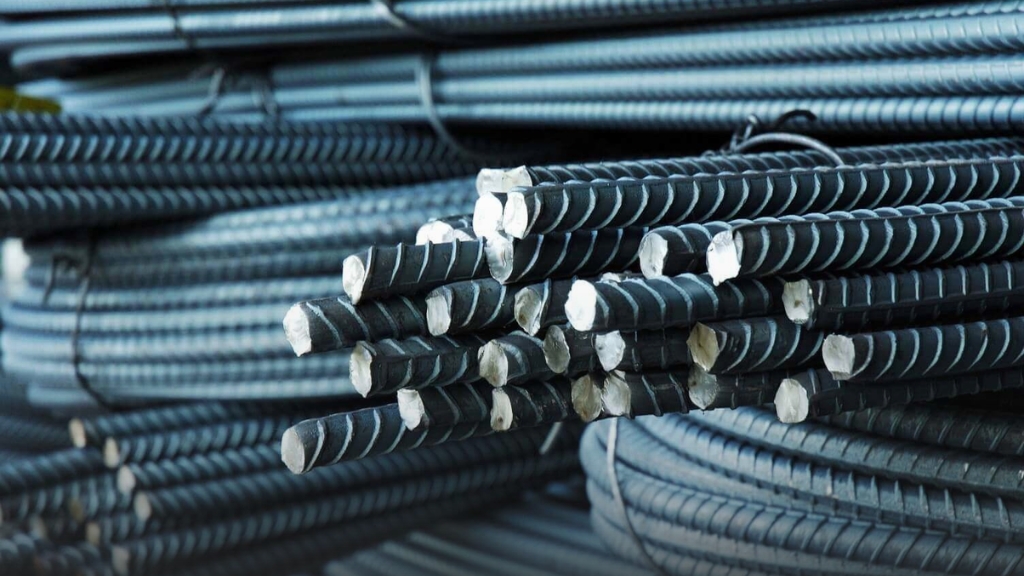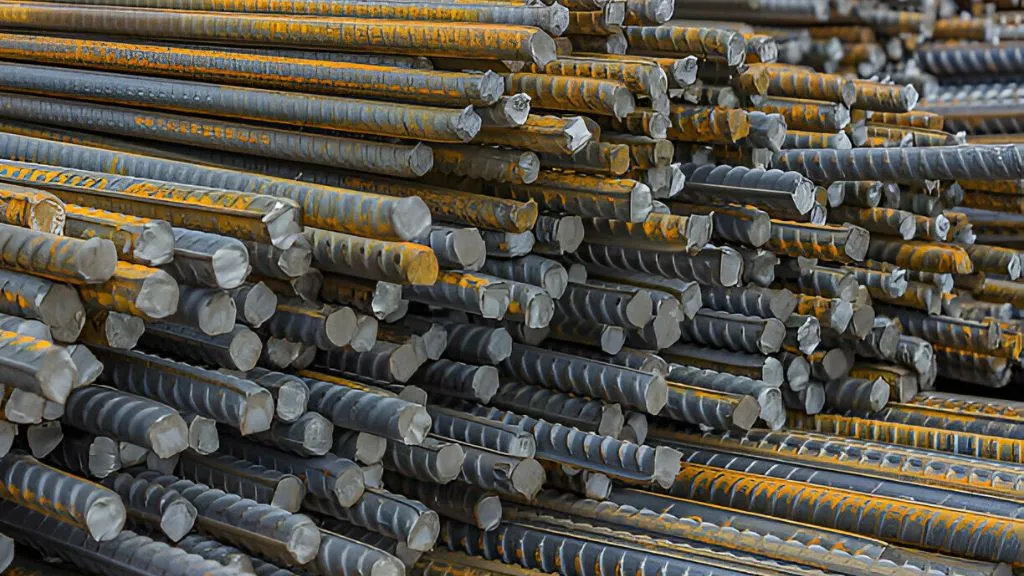Property Geek
We provide the actual and accurate information with unbiased user driven reviews to our viewers, to help them see the best and find the best!
View posts
Steel bars are the backbone of modern construction, playing a crucial role in reinforcing concrete structures. Whether you’re a civil engineer, contractor, or builder, understanding the unit weight of steel bars is essential for accurate material estimation, cost calculations, and structural planning.
In this guide, we’ll break down the weight of steel bars per meter, the factors influencing it, and how to calculate it using a simple formula. By the end of this blog, you’ll have a clear understanding of steel bar weights, particularly for 8mm, 10mm, 12mm, and 16mm bars.
The unit weight of a material refers to its weight per unit volume. For steel bars, this helps determine the weight per meter, which is a critical factor in construction projects.
Knowing the unit weight allows builders to:

The weight of a steel bar is calculated using the standard formula:
Weight per meter = D × D / 162
Weight per meter = 162/D × D
Where:
Example: 10mm Steel Bar Weight Calculation
For a 10mm steel bar, apply the formula:
10×10/162=0.617 kg/m
So, a 10 mm steel bar weighs 0.617 kg per meter.
Now, let’s calculate the weights for other standard steel bar sizes.
The unit weight of steel bars varies based on their diameter, which plays a crucial role in determining the total steel requirement for a construction project. Below is a comprehensive table that includes various steel bar diameters and their corresponding weights per meter:
| Steel Bar Diameter (mm) | Weight per Meter (kg/m) |
| 6mm steel bar weight | 0.222 kg/m |
| 8mm steel bar weight | 0.395 kg/m |
| 10mm steel bar weight | 0.617 kg/m |
| 12mm bar weight | 0.889 kg/m |
| 16mm bar weight | 1.580 kg/m |
| 20mm steel bar weight | 2.469 kg/m |
| 25mm steel bar weight | 3.858 kg/m |
| 32mm steel bar weight | 6.313 kg/m |
| 40mm steel bar weight | 9.864 kg/m |
The weight of a steel bar is calculated using the standard formula:
Weight per meter = D × D/162
Where:
For example, for a 20mm steel bar:
20×20/162 = 2.469 kg/m
Significance of Different Steel Bar Sizes
Formula: (6 × 6) / 162 = 0.222 kg/m
A 6mm steel bar weighs 0.222 kg per meter, making it ideal for light reinforcement applications, such as constructing small residential structures, slabs, and minor repairs.
Formula: (8 × 8) / 162 = 0.395 kg/m
An 8mm steel bar weighs 0.395 kg per meter, commonly used for small-scale reinforcements in walls, slabs, and minor structural components.
Formula: (10 × 10) / 162 = 0.617 kg/m
A 10mm steel bar weighs 0.617 kg per meter, widely used in beam, column, and slab reinforcements for both residential and commercial buildings.
Formula: (12 × 12) / 162 = 0.889 kg/m
A 12mm steel bar weighs 0.889 kg per meter, making it suitable for medium- to heavy-duty structural work, such as multi-story buildings and large slabs.
Formula: (16 × 16) / 162 = 1.580 kg/m
A 16mm steel bar weighs 1.580 kg per meter, primarily used for load-bearing structures, bridges, and high-rise construction projects.
Formula: (20 × 20) / 162 = 2.469 kg/m
A 20mm steel bar weighs 2.469 kg per meter, commonly utilized in large-scale infrastructure projects, heavy beams, and columns requiring high load resistance.
Formula: (25 × 25) / 162 = 3.858 kg/m
A 25mm steel bar weighs 3.858 kg per meter, frequently used in bridges, flyovers, and heavy foundation reinforcements for durability and strength.
Formula: (32 × 32) / 162 = 6.321 kg/m
A 32mm steel bar weighs 6.321 kg per meter, mainly utilized in mega-structures, industrial plants, and high-load-bearing projects requiring superior reinforcement.
While the unit weight of steel bars is calculated using a standard formula, several factors can influence the actual weight. These variations arise due to differences in steel grade, manufacturing process, and composition. Understanding these factors helps in accurate material estimation and project planning.
Steel bars are available in different grades, each designed for specific construction needs. The grade of steel determines its strength, flexibility, and density, which can slightly affect its weight.
Higher-grade steel bars may have minor weight variations due to differences in their chemical composition and density. These variations, while minimal, are essential to consider for structural integrity and cost estimation.
The manufacturing method used to produce steel bars can also lead to slight differences in their weight. The three most common types of steel bars are:
Despite these variations, the standard (D × D) / 162 formula provides a reliable approximation for weight calculations. Understanding these factors helps builders make informed decisions, optimize material usage, and ensure structural stability while keeping costs under control.
Accurately determining the unit weight of steel bars is essential in construction planning, cost estimation, and structural safety. Engineers, contractors, and project managers rely on these calculations to ensure that projects run smoothly without unnecessary delays or cost overruns. Below are key reasons why knowing the weight of steel bars per meter is critical in construction.
In any construction project, precise material estimation is crucial to avoid shortages or excess purchases. Contractors and engineers use steel bar weight calculations to determine the total quantity required for reinforcement. A miscalculation can lead to:
By using the standard formula to calculate the weight of 10mm steel bar weight per meter and other sizes, construction professionals can ensure that every kilogram of steel is efficiently utilized.
Steel is one of the most expensive materials in construction, and its price is determined per kilogram or ton. Accurately calculating the weight of steel bars per meter helps in budgeting and cost control by:
For example, if a project requires 1000 meters of 12mm steel bars, knowing that the unit weight of a 12mm bar is 0.889 kg/m allows accurate cost estimation before procurement.
Using the correct steel bar weight is not just about cost—it is essential for structural integrity and safety. Engineers calculate the weight of 10mm, 12mm, or 16mm steel bars to ensure that:
For example, in high-rise buildings, bridges, and industrial constructions, 16mm and 25mm steel bars are commonly used for added strength. Miscalculating their weight can result in under-reinforcement, leading to structural failure risks.
Transporting steel bars, especially 16mm, 20mm, or 25mm bars, requires careful logistical planning. Knowing the exact weight helps in:
For instance, if a truck has a weight limit of 10 tons, and a project requires 16mm steel bars (1.580 kg/m), calculating the total weight ensures the right quantity is transported without exceeding capacity.
Construction standards and regulations specify the required unit weight of steel bars for different types of structures. Engineers must follow these guidelines to ensure:
By understanding the weight per meter of steel bars, construction professionals can confidently design structures that adhere to national and international safety regulations.
Understanding the unit weight of steel bars is crucial for accurate material estimation, cost control, and structural safety in construction projects. The weight of steel bars is calculated using the formula (D × D) / 162, which helps determine the exact quantity required for different applications.
Factors such as steel grade and manufacturing process can slightly influence the weight, making precise calculations even more essential. By knowing the weight of common steel bar sizes, engineers and contractors can optimize resources, reduce material waste, and ensure project efficiency.
Accurate weight estimation ultimately leads to cost-effective and structurally sound construction planning.